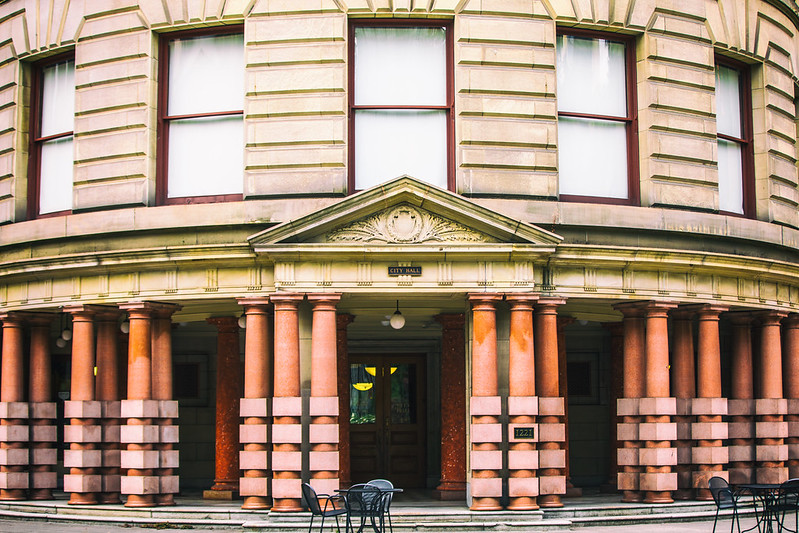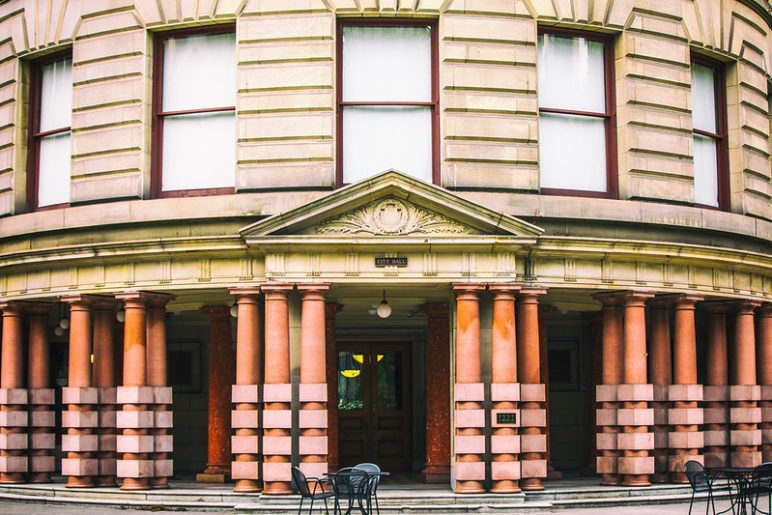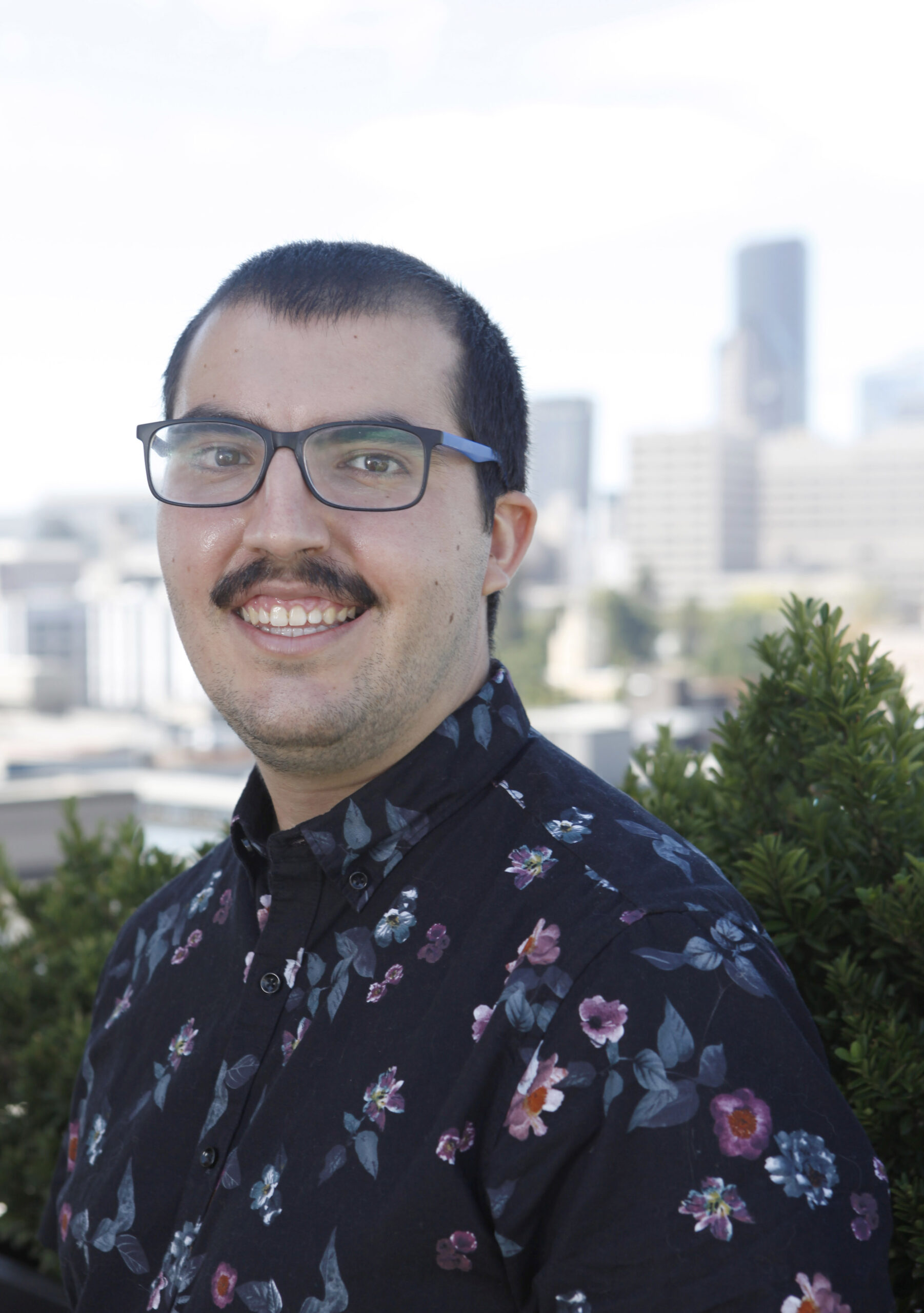Author’s note: Based on our research into the proposal’s effects, Sightline Institute has endorsed ballot measure 26-228. Read on for some details about the measure and highlights of our research.
With six weeks until the November 8 Election Day, Portlanders are gearing up to vote on a ballot measure that would transform the city’s system of government and elections so that they better serve and represent the people of Portland. Since Sightline’s last update on the effort to change Portland’s city charter, campaigns have geared up both for and against the measure, and news has proliferated around lawsuits, alternative reform proposals, and opposition figures. Below we review what the measure contains and the last few months’ developments you may have missed as you were enjoying your summer.
What would ballot measure 26-228 deliver?
Portland voters will have to look well down their ballots this fall, past numerous other races for federal, state, and local offices to find any local ballot measures. But when they do, they’ll see this question: “Should Administrator manage city government, 12-member Council (three from each district) make laws, voters elect officials using ranked choice process?” This is measure 26-228, an opportunity to change the city’s charter in three key ways:
1. City departments run by a mayor-appointed professional administrator, not city councilors
Portland’s current system is kind of like if your US Representative was also in charge of running the IRS every day, taking away time from their work passing bills and responding to people in their district.

City Council would become a true legislative body instead of mixing council work with the daily duties of running city departments. This would let councilors focus on making laws, connecting with residents, and addressing constituents’ concerns. Most importantly, councilors would no longer directly supervise individual government bureaus’ day-to-day operations.
Portland’s current system is kind of like if your US Representative was also in charge of running the IRS every day, taking away time from their work passing bills and responding to people in their district. Portland is the only large American city that uses this style of government (called the “commission form”), and critics decry it for a lack of efficiency, accountability, transparency, and cooperation. In place of individual commissioners running different departments, the mayor would supervise a professional city administrator (confirmed by City Council) to run the bureaus.
2. A bigger council to serve the growing Portland population, in 4 geographic districts
Each councilor would represent one of four geographic districts, and each district would elect three councilors. This would create a 12-member City Council, a figure that expands the council to better match Portland’s current population and updates it from the mere five councilors (including the mayor) it has comprised since 1913.
Since 1995, three-quarters of councilors have been white men and less than four percent have been people of color, even while over a quarter of Portlanders in that period were people of color.

This means not only more points of access for Portlanders to voice their needs to the city, but also better representation for constituencies historically excluded from council: women, people of color, renters, young people, residents of East Portland, and working-class Portlanders. For instance, since 1995, three-quarters of councilors have been white men and less than four percent have been people of color, even while over a quarter of Portlanders in that period were people of color. Multi-member districts and a larger council overall, like those proposed in measure 26-228, will help these groups gain a greater voice on council. And councilors can maintain an office in their district, which would allow residents to go to any of their three councilors at a more local city office for certain business instead of having to travel downtown.
3. Elections that include more voters and honor their true preferences
Finally, all elected officials would be chosen using ranked choice voting. Voters would rank candidates in order of their preference, then votes would be counted in rounds. For one-winner positions like the mayor, last-place candidates are eliminated in each round until a winner receives more than 50 percent of the votes. After the first round of counting, voters’ later choices are counted if their top candidate is eliminated.
Of the past 15 City Council elections, only 5 were decided in the November general election, when about twice as many voters turn out.

The mayor and auditor would each be elected under this single-winner ranked choice voting1 method. The three council members from each district would be elected using multi-winner ranked choice voting,2 which is similar but would select the three candidates who each get more than 25 percent of the vote (instead of one candidate elected with over 50 percent). This multi-winner method is a form of proportional representation, the most common type of election worldwide.
Because RCV only requires voters to cast one ballot on one date (unlike Portland’s current runoff system), all city races would take place in the November general election. There would be no primary in May for city offices. Consolidating the primary election paves the way for an electorate that is significantly larger, younger, and more racially diverse. Of the past 15 City Council elections, only 5 were decided in the November general election, when about twice as many voters turn out. The rest ended in the May primary, when voters are less representative of the city’s communities.

I described parts of the measure in greater detail in an article earlier this year, and the city government recently published an FAQ.
What’s going on now?
For two years, a volunteer Charter Commission has been hearing public input and reviewing potential improvements to Portland’s City Charter (effectively the city’s constitution). When 17 of the 20 commissioners voted to do so, they forwarded their first set of proposed changes to Portland voters as ballot measure 26-228.
After they made this recommendation, critics attempted to challenge the measure and force the Charter Commission to change its proposal. The ballot measure survived multiple legal challenges, most notably a lawsuit from the Portland Business Alliance claiming the proposal covered too many disparate topics. A Multnomah County judge disagreed, and the changes made it onto the ballot for Portlanders to vote on this November.
Opponents are trying to convince voters to reject the measure, and some support a to-be-determined alternative to the Charter Commission’s recommendation. The opposition campaign is urging Portlanders to “vote no to get to a better yes,” telling folks that if the current ballot measure falls short in November, there will be a different proposal to vote on next year.
No such proposal has been released yet. City Commissioner Mingus Mapps, who ran on a platform including charter reform but who now opposes ballot measure 26-228, has said he will announce one in the coming weeks. Mapps’ initial outline of such a proposal included one-winner districts for City Council. While single-member districts have some benefits, they also have several downsides that should be considered: they wouldn’t allow voters of color to elect any candidates of their choice in Portland, they’re more vulnerable to gerrymandering, and they contribute to decreases in housing production, among other drawbacks.
The Charter Commission’s proposal went through a two-year public process, has survived multiple legal challenges, and is on the ballot this November. Mapps’s promised alternative has not yet gone public, could change from its initial outline, and would need to gain two more votes from City Councilors before proceeding to the ballot. If the proposal makes it that far, it would likely go before a much smaller and less representative odd-year electorate in 2023.
What’s next?
After proposing this ballot measure, the Charter Commission started considering other changes to the city’s governing document. They’re looking at other topics like climate and environmental justice, expansion of voting rights, and issues submitted by city bureaus. Portlanders can weigh in on what they want these further changes to look like.
Campaigns are already in gear to persuade Portlanders to vote for and against the ballot measure. The supporting campaign is organized as Portland United for Change, and the opposition is the Partnership for Common Sense Government. Voters can expect to see appeals from both campaigns in the Voters’ Pamphlet that gets mailed out before the election, in addition to the more neutral official summary provided by the city.
Outside groups and news outlets will help inform voters about the ballot measure between now and November. The City of Portland will also be doing some voter education leading up to the election and during the implementation process, though as a government body it is not allowed to campaign in favor of the measure.
Election Day is coming up soon! Ballots will be mailed to voters on October 19. Voters will have to return them by 8:00 p.m. on November 8. Ballots are accepted at drop sites across the city or through the mail. With Oregon’s new postmark deadline, voters have a bit more time to mail back their vote: any ballot received and processed by USPS before 8:00 p.m. will be counted.











Clay Shentrup
That’s incorrect. To win a seat in a three-winner STV election, you need 1/4 of the vote.
Jay Lee
Thanks for the note, Clay. The next paragraph went on to specify that this method applied to single-seat races (like the mayor and auditor), but I’ve amended the first reference so there’s no confusion.